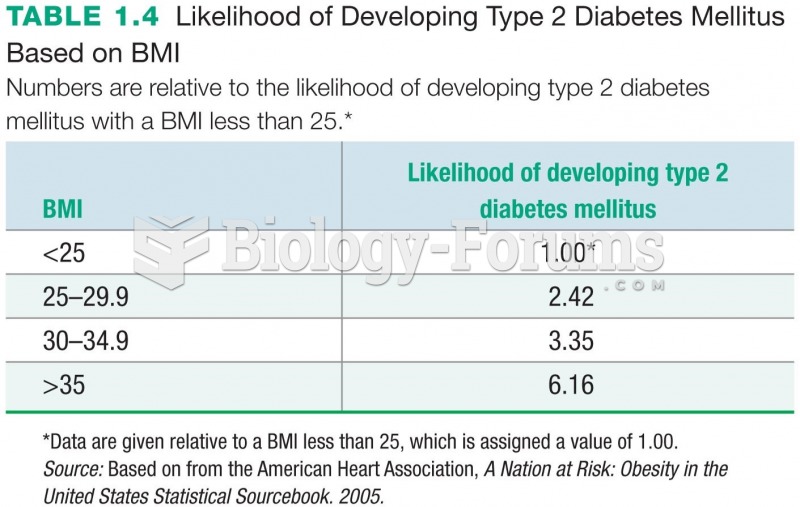Answer to Question 1
A severe lack of insulin causes diabetic ketoacidosis. Without insulin, glucagon's effects become more pronounced, leading to the unrestrained breakdown of the triglycerides in adipose tissue and the protein in muscle. As a result, an increased supply of fatty acids and amino acids arrives in the liver, fueling the production of ketone bodies and glucose. Ketone bodies, which are acidic, can reach dangerously high levels in the bloodstream and spill into the urine. Blood pH typically falls below 7.30. Blood glucose levels usually exceed 250 mg/dL and rise above 1000 mg/dL in severe cases. The main features of diabetic ketoacidosis therefore include severe ketosis, acidosis, and hyperglycemia. The hyperosmolar hyperglycemic syndrome is a condition of severe hyperglycemia and dehydration that develops in the absence of significant ketosis. The hyperglycemia that develops in poorly controlled diabetes leads to polyuria, which results in substantial fluid and electrolyte losses. In the hyperosmolar hyperglycemic syndrome, patients are unable to recognize thirst or adequately replace fluids because of age, illness, sedation, or incapacity. The profound dehydration that eventually develops exacerbates the rise in blood glucose levels, which often exceed 600 mg/dL and may climb above 1000 mg/dL. Blood plasma may become so hyperosmolar as to cause neurological abnormalities, such as confusion, speech and vision impairments, muscle weakness, abnormal reflexes, and seizures; about 10 percent of patients lapse into coma. Hypoglycemia is the most frequent complication of type 1 diabetes and may occur in type 2 diabetes as well. It is due to the inappropriate management of diabetes rather than to the disease itself, and is usually caused by excessive dosages of insulin or antidiabetic drugs, prolonged exercise, skipped or delayed meals, inadequate food intake, or the consumption of alcohol without food.
Answer to Question 2
C







